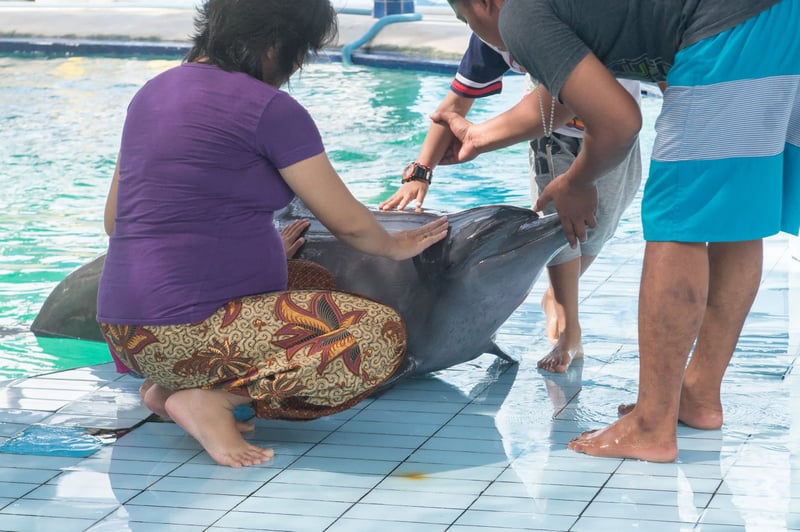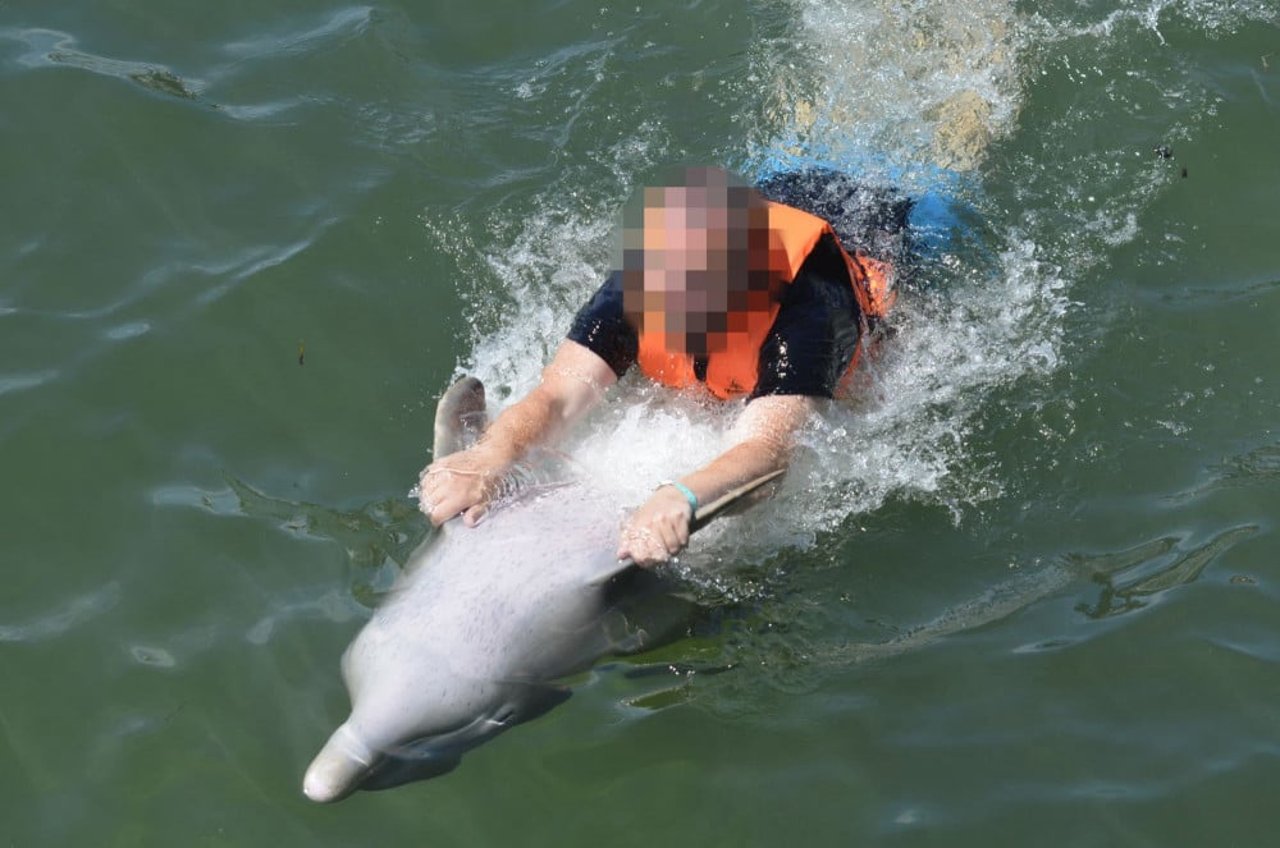
Thousands of captive whales, dolphins and other marine mammals still suffering in 2019
News
Our new Case Against Marine Mammals in Captivity (CAMMIC) report details, with scientific evidence, why we should never force these intelligent, wild animals to live in artificial environments
Revealed in the report
- Wild cetaceans (whales and dolphins) travel 40-100 miles a day, achieve speeds of 30 miles per hour, and dive hundreds of feet deep. Even in the largest facilities, they have less than 0.0001% (one millionth) of their natural habitat range.
- One 2014 study found that a captive male orca spent nearly 70% of his time virtually motionless.
- Captive marine mammals suffer from a huge range of health problems, including extreme stress, neurotic behaviors and abnormal levels of aggression.
- Bottlenose dolphins are six times more likely to die immediately after capture from the wild and transfer between facilities.
- Annual mortality rates for captive orcas have improved over the years, but they still don’t match healthy populations in the wild.
- The number of ocean theme parks in China has jumped from 39 in 2015 to 76 in early 2019.
- Dolphin sea pen enclosures in Asia and the Caribbean are at extreme risk from hurricanes and tsunamis and damage the environment, including coral reefs and mangroves.
Captivity is cruelty
The fifth edition of CAMMIC, co-produced by us and the Animal Welfare Institute (AWI) was released today (March 8) at the ITB Berlin conference in Germany, one of the world’s largest travel events.
It’s a damning portrait of the behind-the-scenes cruelty of zoos, aquariums, and marine theme parks that trade and exploit captive marine mammals for entertainment.
Keeping marine mammals captive, whether captured from the wild or bred in captivity, causes immense suffering – from capture, to transport, to a lifelong existence in small barren tanks.
Dolphin forced to entertain tourists in Cuba
Life in captivity is no life at all
Nick Stewart, our Global Head of Campaigns says: “The life in captivity for marine mammals such as dolphins is so contrary to their natural lives. A life in captivity is simply no life at all."
“Tourists and the global travel industry are a key source of demand for existing and new captive marine mammal facilities, which is why we have chosen to launch the report at one of the world’s biggest travel shows.”
Dr Naomi Rose, the report’s lead author and AWI’s marine mammal scientist says: “Marine mammals simply cannot thrive in captivity. Almost all marine mammal species are wide-ranging predators and the best we can provide for them are barren concrete boxes or small sea pen corrals.”
Working with the industry
We will be speaking to travel companies at ITB Berlin about the suffering endured by captive marine mammals, and the steps the industry can take to become a part of the solution to this global problem.
A life in captivity is simply no life at all.
